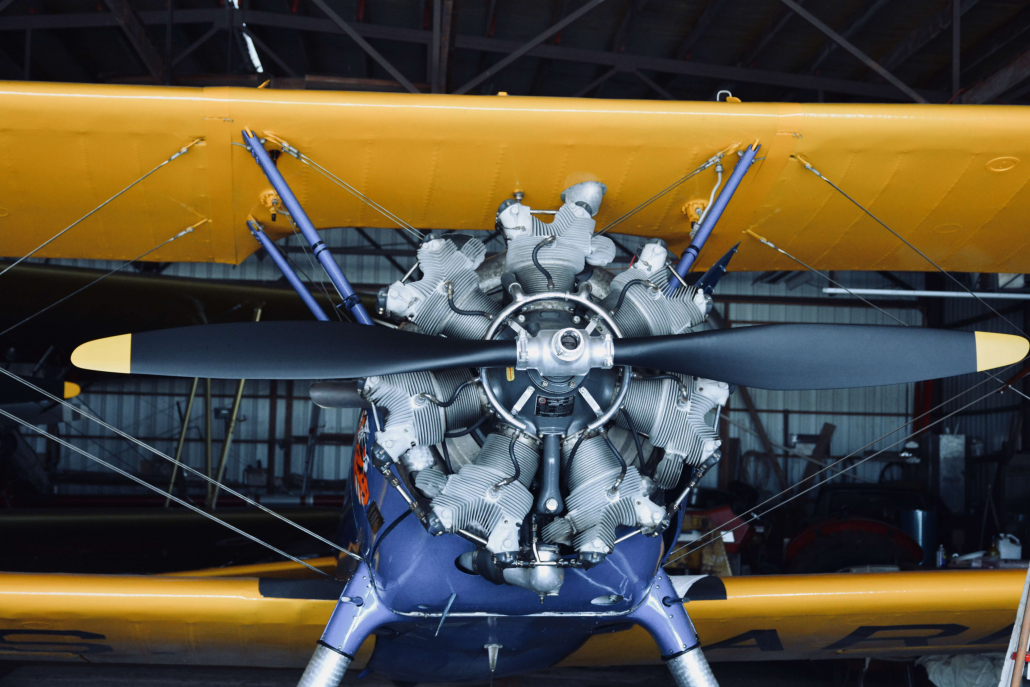Aviation Interest Surges in East County — Grove Field Considers Upgrades
Grove Field, Fern Prairie, WA — Personal pursuits and business demands are driving the present surge in East County aviation, according to pilot Neil Cahoon, and Port of Camas-Washougal Commissioner, John Spencer.
Cahoon, a retired Delta Airlines and military pilot, owns three planes and runs an annual private pilot ground school at Grove Field. The class itself is at capacity and is double the student size from 2017.
“Last year, we had eight students, this year we have 18,” said Cahoon. “And that’s our capacity. We need more instructors here in Clark County to meet the demand.”
The 12-week class is designed to teach the fundamentals of aviation, and is the beginning of the journey to become a private pilot. The ground class prepares students for the FAA Knowledge Test and then the Private Pilot Practical Exam. Following this phase, students are required to do a minimum of 40 hours of flight time to get a private pilot certificate.
While there’s no Federal Aviation Administration (FAA) requirement to attend a ground school, Cahoon said students benefit from this course by sharing the experience with like-minded individuals trying to achieve a goal. When the course is completed, students will have had 36 hours of class instruction, and hopefully at least one hour per week of personal study time.
Cahoon, who spent 13 years flying in the Air Force, ultimately became a commercial pilot for Northwest, which was purchased by Delta. He also spent seven years in the reserves. He retired from Delta in 2016. He’s flown the big planes, but he’s most fond of his 1946 Piper J3 Cub, which was purchased three years ago — which he flew from New York to Camas.
Most students in the class were there for personal pursuits.
“I do big things on my ten’s birthdays,” said student Patty Holt. “I’ve got another one coming up — so I want to fly a plan on my next big birthday.”
But, there’s also business interest that spiking the support for aviation. This is largely separate from the personal pursuits.
The Port of Camas-Washougal is currently developing an Airport Layout Plan (ALP), which would get Grove Field to meet all FAA safety requirements for its current traffic. The port oversees the air field.
“There are some good things about the ALP, but I do have some real concerns,” said Cahoon. “The north side properties (at the airport) have a unique arrangement with the Port of Camas-Washougal where they have perpetual access to their property. They own the north side taxi-way. When an airport becomes obligated with FAA funds, the Feds need a fence or barrier between public and airport property. They don’t like the type of access that is currently there. I don’t want to see their access impeded in any way, so that arrangement needs to be determined before we partner with the FAA,” said Cahoon.

This is a modified Glove Swift, owned by Charlie Hopkins. It has a constant speed propeller that turns counter clockwise.
Spencer, one of three Port of Camas-Washougal commissioners, said they are making plans so that the airport is viable for decades to come.
”We need to think in terms that we serve a greater community — not just Camas,” said Spencer. “We’re the only airport in East County, and we need to think about emergency preparedness. For example, Grove Field wasn’t usable during the recent fires. With an instrument approach, you could have used the airport.”
The ALP, said Spencer, is working toward these ideas:
- 3,070 feet of runway, which gives the airport an instrument approach and meets FAA standards.
- Increasing runway width from 40 feet to 60 feet.
- Taxiways needs to be separated from the runway.
- Clear trees by the airport’s west end.
- Remove the mobile home park adjacent to the airport.
- Purchase two acres from Johnston property (which is for sale) to extend air field.
“We’re the only airport in East County,” said Spencer. “To meet growing business demand, we need to expand. Getting freight in and out of Camas will become more important , plus the airport is at a great location to serve the community during a crisis, such as a major earthquake.”
If the ALP was approved and enacted today, it would take four or five years to break ground and begin construction. The ALP alone requires 18 months of review, then there’s the Environmental Impact Statement, and the Graphic Information System Survey (GISS). The Port would need to apply for an FAA grant, which would cover 90 percent of the estimated $15-20 million cost. The remaining 10 percent comes from the State and the Port itself.
To learn more, visit @cwaagrovefield on Facebook or www.portcw.com
Aviation Photo Gallery
- This 1946 Piper Cub is owned by Neil Cahoon.
- 1946 Piper Cub,
- This is a modified Glove Swift, owned by Charlie Hopkins. It has a constant speed propeller that turns counter clockwise.
- Cockpit of a plane stored at Grove Field.
- This is the brief case provided by Gleim, who published the ground training school textbooks.
- 1940s vintage aircraft.
- Interior of 1946 J3 Piper Cub.














Leave a Reply
Want to join the discussion?Feel free to contribute!